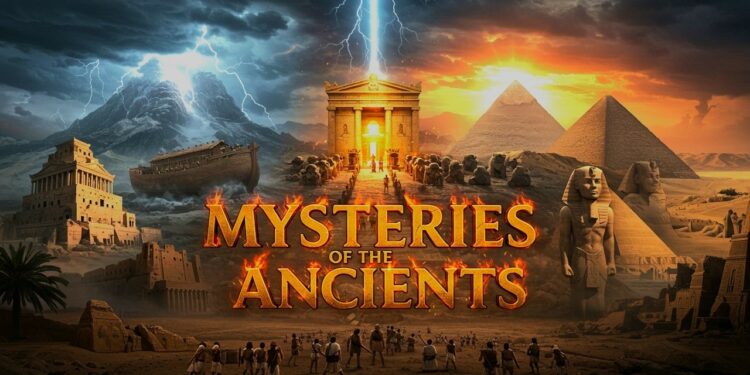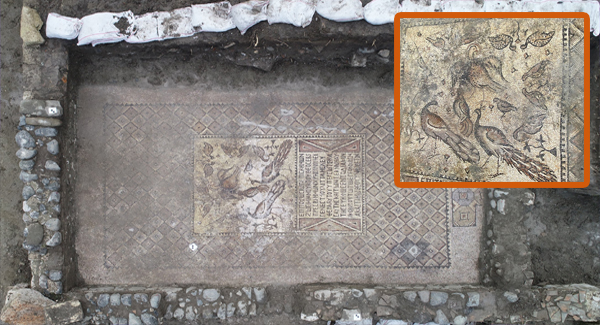Have you ever heard of constructions so grandiose they defy logic? Monuments built with unimaginable wealth, challenging time, mysteriously lost, or hiding secrets science still struggles to explain? The Bible mentions some of history’s most impressive structures, each carrying a hidden mystery, a lost message, or a truth few dare to explore. In this journey, we’ll uncover five incredible biblical constructions and the secrets they conceal. But stay alert—the final one might challenge everything you thought you knew and leave you speechless. Are you ready to explore the mysteries uniting faith, history, and archaeology? Let’s dive in and discover the greatest constructions of the Bible.
1. Noah’s Ark: A Colossal Feat of Faith
Imagine building a gigantic ship without modern technology—no cranes, no electric tools, just wood, calloused hands, and unshakable faith. That’s what Noah did, and centuries later, his story continues to captivate scientists, archaeologists, and believers in the impossible. The Bible describes a time of corruption and chaos when God chose Noah for an unimaginable mission: to build a colossal refuge to save his family and representatives of every animal from a global flood.
Picture Noah receiving this divine command, cutting wood, carving joints, and designing compartments. Decades of grueling work under the scorching sun, facing mockery, doubt, and the weight of preserving God’s creation. The ark was no ordinary boat—approximately 450 feet long, 75 feet wide, and 45 feet high, nearly the size of a modern cargo ship, made of gopher wood and coated with pitch. How did Noah achieve this without advanced tools? How did he organize the animals? And was there truly a flood capable of covering mountains?
Science offers clues. Geologists and historians have found evidence of a massive flood in Mesopotamia, suggesting a catastrophic event thousands of years ago may have inspired flood traditions. More intriguingly, in 1959, a Turkish pilot spotted a ship-like formation on Mount Ararat. Expeditions since have found petrified wood and geological structures resembling a large vessel. Is it Noah’s Ark? Science debates, but faith remains steadfast.
2. The Walls of Jericho: A Collapse That Defies Logic
Imagine standing before a city with colossal, impassable walls, a fortress built to withstand any enemy. Now picture the impossible: these walls don’t fall to battering rams or explosives but to the sound of trumpets and cries of faith. This is the story of Jericho, one of humanity’s oldest cities and the stage for one of the Bible’s most mysterious events.
According to scripture, Jericho’s fortified walls seemed unconquerable to the Israelites, who had wandered the desert for 40 years. God’s plan defied military logic: march silently around the city once daily for six days, then on the seventh, circle it seven times, blow trumpets, and shout. Miraculously, the walls collapsed—not by war machines or earthquakes, but by sound.
Could this be possible? In the 1950s, archaeologist Kathleen Kenyon excavated Jericho and found ruins of a large wall that collapsed suddenly, intriguingly from the inside out—unusual for an invasion. Some suggest an earthquake, common in the region’s fault zone, but how could the Israelites predict its timing, coinciding with their trumpets and shouts? Jericho’s collapse remains a profound mystery where science and faith intersect.
3. Solomon’s Temple: A Celestial Marvel
Imagine a building so grand its walls were covered in pure gold, reflecting sunlight in a celestial glow—a sacred place housing God’s presence. Solomon’s Temple was Israel’s architectural masterpiece, shrouded in mystery and reverence. King David dreamed of building it, but the task fell to his son, Solomon, on Mount Moriah, where Abraham nearly sacrificed Isaac.
The construction was extraordinary: precisely carved stones prepared off-site, with no sound of tools at the temple, per God’s command. Cedars of Lebanon filled the air with sacred aroma, and the interior gleamed with gold, adorned with cherubim, palm trees, and flowers. The Holy of Holies housed the Ark of the Covenant, symbolizing God’s presence.
After seven years, the temple was inaugurated. Solomon prayed, and a glorious cloud filled the temple, followed by fire from heaven consuming the sacrifices—a divine sign of acceptance. Yet, its destruction centuries later left enduring mysteries. How was such a marvel built, and what was its true spiritual significance?
4. The Tower of Babel: Ambition That Shattered Unity
Imagine a world where all humanity speaks one language, united in purpose to build a tower reaching the heavens. But this ambition angered God, breaking communication and halting the project forever. The Tower of Babel, set in the plain of Shinar (ancient Mesopotamia), was a monument of human self-sufficiency.
Using fired bricks and bitumen, humanity aimed to “make a name” and challenge God. As the tower rose, God confused their language, turning unity into chaos. Masons couldn’t understand each other, and the tower was abandoned, its builders scattering into nations.
Was it real? Scholars suggest the story may echo ziggurats, like Babylon’s Etemenanki, a temple called “the house that unites heaven and earth.” Its resemblance to the biblical tower is striking. Beyond history, Babel warns of unchecked ambition, a lesson resonating today.
5. The Second Temple: A Symbol of Rebirth and Tragedy
Imagine a people exiled, their sacred temple in ruins. Returning from Babylon, the Jews dreamed of rebuilding. The Second Temple of Jerusalem symbolized rebirth and hope but paled compared to Solomon’s. Elders wept at its modesty—no Ark, no golden walls.
Yet, the prophet Haggai promised its glory would surpass the first. Centuries later, King Herod transformed it into a wonder, with gold, marble, and vast courtyards. It became Judaism’s heart, where Jesus taught and prophesied its destruction: “Not one stone will be left on another” (Matthew 24:2).
In 70 AD, the Romans burned the temple, melting its gold and dismantling its stones. Only the Western Wall remains, a symbol of loss and resilience. Jesus declared himself the true temple, shifting God’s presence to the hearts of believers. Are you ready to receive Him?























